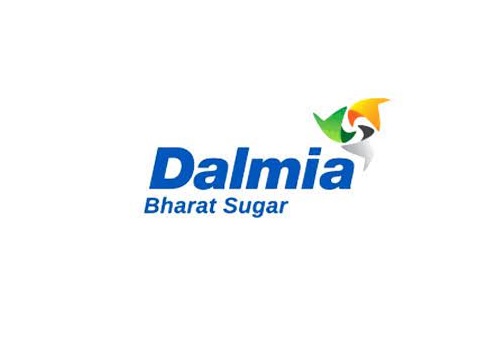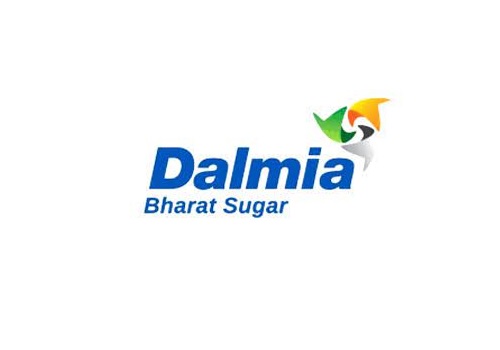Buy Cholamandalam Investment & Finance Ltd For Target Rs.700 - Motilal Oswal

Follow us Now on Telegram ! Get daily 10 - 12 important updates on Business, Finance and Investment. Join our Telegram Channel
Going strong despite supply-side headwinds
Asset quality exhibiting steady improvement
* Cholamandalam Investment & Finance (CIFC) is a franchise we have always felt very strongly about owing to its ability to play different credit cycles better than its peers. We particularly like that even within Vehicle Finance, it very tactically turns Underweight/Overweight in different product segments to deliver industry-leading growth and the most benign credit costs.
* Understandably, CIFC’s disbursements in the recent quarter (2Q) were propped up by strong disbursements in the LAP segment. However, one also needs to understand that the LAP franchise has been strengthened significantly in the last two years.
* Its performance in disbursements (including LAP and Home Loans) has been superior v/s peers, while collection efficiency (CE) has consistently been 100%+ for the past few months. Macro indicators, such as e-way bills (despite the seasonal decline seen in Nov’21 post the festive season) and GST collections, also indicate strong recovery.
* The company, very strategically, keeps working on its product mix to ensure healthy blended yields. Going forward, while there would be only a minor benefit in cost of borrowings, coupled with the normalization of excess balance sheet liquidity, this would lead to stable margins.
* CIFC posted a 20% AUM CAGR over FY16–21, while the normalized RoA profile (adjusted for one-off COVID provisions) improved to ~2.6% (in FY22E) from ~2.0% (in FY15). CIFC is well-diversified across product segments as well as geographies. Importantly, it has delivered the best asset quality among peers across credit cycles as well as in times when the external environment has been tough. The impact of newer variants / COVID waves is a known unknown; however, the levels of provisions carried by CIFC today give us comfort that any newer disruption in the economy should not lead to outsized credit costs. The stock trades at 3.5x FY23E P/BV, above its 10-year average of 2.5x. Given CIFC’s ability to deliver industryleading growth in the loan book (CAGR of 13% over FY22–24E) – coupled with its strong asset quality (expected credit cost of ~1% over FY23–24E) and consequently healthy RoE of ~19% – we believe it would continue to command premium valuations relative to its listed peers in Vehicle Finance. Maintain Buy, with TP of INR700 (3.9x Sep’23E BVPS).
COVID, chip shortage, excessive south rainfall will impact growth in FY22
OEMs suggest the availability of chips is gradually increasing, and normal production could resume by Mar’22. Commentaries from vehicle financiers also suggest supply-side issues could significantly ease by the end of the current fiscal. Our recent channel checks suggest disbursements (and even collections) for vehicle financiers were impacted in Nov’21 due to excessive rainfall in some of the states in southern India. Disbursements for vehicle financiers in 3QFY22 would, therefore, be potentially lower than earlier targeted. However, this could well be due to vehicle sales (and thus financing) being postponed to 4QFY22. With the expectation of recovery in OEM sales in 4QFY22, CIFC would continue to deliver above-average disbursement growth in the foreseeable future. While we expect AUM growth to be modest at ~6% YoY in FY22 (due to impacted disbursements), it should improve to ~11% in FY23E and subsequently to the midteen levels from FY24E.
Underweight/Overweight in different vehicle product segments helps maintain optimum product mix
The share of HCVs in the AUM mix has declined from ~20% to 10% over the past three years, while that in disbursements has declined from ~15% to ~4%. The company made this strategic choice around three years ago – while this led to some impact on growth for CIFC, it helped improve overall yields and return ratios. During this period, it saw the proportion of tractor financing in the disbursement mix almost doubling to 13% in FY21 (from 7% in FY18), led by robust demand for tractors. Commentary from CIFC suggests it once again anticipates demand for HCVs to pick up, led by spending on infrastructure and real estate. Given CIFC’s presence in all the vehicle segments, it very tactically turns Underweight/Overweight in different product segments to maintain an optimum product mix, feeding into a strong return profile.
Provisions healthy; expect gradual improvement in asset quality to feed into normalized credit costs from FY23
CIFC’s ‘stressed’ pool (Stage 2 + Stage 3 loans) has increased 8.7pp to 18.8% over the last two quarters (vis-à-vis a ~11% increase in 30+dpd loans for MMFS over the same period). CIFC’s total provision buffer [ECL/EAD] stood at 4.1% and has been increased by ~50bp in 1HFY22 (up 225bp since the pandemic outbreak). While the loan book did exhibit stress with the advent of the second COVID wave, CIFC has managed to rein in some of the asset quality deterioration in 2QFY22. Moreover, we expect steady improvement in Stage 3 to ~5% by Mar’22 and further improvement to ~4% and ~3% levels by FY23E and FY24E respectively. We also believe that this would be supported by improved LAP asset quality – the company would be able to leverage SARFAESI for the resolution of stressed advances more effectively.
We believe CIFC has been conservative in provisioning and is well provided for. We should now see credit costs normalize to run-rate levels (~1%) unless the new COVID variant leads to renewed medical emergencies and localized lockdowns in the country.
Expect stable spreads and margins even as liquidity remains marginally elevated in current environment
A large portion of the benefits on incremental cost of borrowings (CoB) is already reflected in CIFC’s blended CoB. The company has effectively leveraged the debt capital markets for its incremental borrowings in the last year. We expect yields to be largely stable and any minor yield pressure (~10bp) to be mitigated by commensurate decline in blended CoB. In the current backdrop and with the resurgence of COVID (new variant), we expect the liquidity buffer to remain marginally elevated through FY22. Thereafter, the management would probably look to bring this down to normalized levels of 6–7% of the balance sheet.
Strategic direction for the next decade
Under the chairmanship of Mr Vellayan Subbiah, investors have been trying to understand the strategic direction the company would take and how it would evolve over the next 5–10 years. CIFC has been highly conservative in guiding investors over the next phase of its evolution. It is currently doing various pilots to understand the different product/customer segments in which to expand its presence over the next five years. It aims to have a presence in the Vehicle, SME, and Consumer Finance ecosystems. While some investors may believe CIFC is not doing enough on the technological/digital front, we believe it is already doing pilots and would divulge further information when it is appropriately convinced about entering any new product segments.
Great combination of industry-leading growth and RoE; Maintain Buy
CIFC is likely to continue to grow faster than peers over the medium term, in our opinion. Its asset quality performance and the consequent credit cost would be significantly better v/s peers. With RoE of ~19% over the medium term, its return ratios are among the best. The company is well-capitalized with a CRAR of 19.6% and would not need any equity growth capital over the near term.
Given CIFC’s ability to deliver industry-leading growth in the loan book – coupled with its strong asset quality (credit cost of ~1% over FY23–24E) and consequently healthy RoE of ~19% – we believe CIFC would continue to command premium valuations relative to its listed peers in Vehicle Finance. We maintain a Buy rating, with TP of INR700 (3.9x Sep’23E BVPS). Key risks include a) a potential third COVID wave leading to localized lockdowns and disruptions in the economy and b) a prolonged shortage of semiconductor chips leading to continued supply-side issues in passenger vehicles and small commercial vehicles.
To Read Complete Report & Disclaimer Click Here
For More Motilal Oswal Securities Ltd Disclaimer http://www.motilaloswal.com/MOSLdisclaimer/disclaimer.html SEBI Registration number is INH000000412
Above views are of the author and not of the website kindly read disclaimer












 320-x-100_uti_gold.jpg" alt="Advertisement">
320-x-100_uti_gold.jpg" alt="Advertisement">












